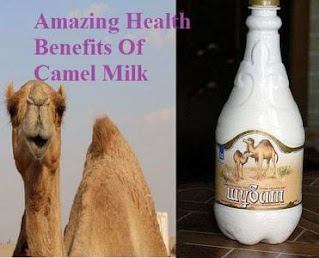In the realm of culinary treasures, few substances rival the allure and versatility of ghee. Known as the "liquid gold" of the kitchen, ghee has held a sacred place in traditional Indian cooking for centuries. Its rich history, unparalleled flavor, and numerous health benefits make it a true elixir of wellness. In this blog post, we'll delve into the fascinating world of ghee, exploring its origins, production, culinary uses, and the myriad ways it can contribute to your overall well-being.
The Origin of Ghee
Ghee's origins can be traced back thousands of years to the Indian subcontinent, where it was born amidst the rich tapestry of Ayurvedic traditions. Ayurveda, the ancient system of natural healing, extolled ghee for its multifaceted virtues. Its production, initially a method to preserve butter in a hot climate, gradually evolved into an art form, symbolizing purity and sustenance.
Making Ghee
Ghee is a form of clarified butter. To make it, butter is gently heated until its water content evaporates, and milk solids separate from the fat. What remains is pure, golden ghee, free from lactose and casein, making it suitable for individuals with dairy sensitivities.
The Process:
Select Quality Butter: Start with high-quality, unsalted butter. Grass-fed butter is often preferred for its superior flavor and nutritional profile.
Slow Heating: The butter is slowly melted over low heat. As it simmers, the water content evaporates.
Separation: The milk solids settle at the bottom, and a foam forms on the surface. Skim off the foam and strain the ghee to remove the solids.
Cooling and Storage: Once strained, the liquid gold is left to cool. It solidifies at room temperature and can be stored for extended periods, even without refrigeration.
The Flavor of Ghee
Ghee boasts a rich, nutty aroma and a deeply satisfying flavor profile. Its unique taste makes it a versatile addition to an array of dishes, from savory to sweet. It's a key ingredient in many traditional Indian recipes, but its culinary applications are by no means limited to Indian cuisine.
Culinary Uses
1. Cooking Oil Replacement
Ghee's high smoke point (around 485°F or 252°C) makes it an excellent choice for sautéing, frying, and roasting. Unlike some cooking oils, ghee doesn't break down into harmful compounds at high temperatures, making it a healthier option.
2. Flavor Enhancer
A dollop of ghee can transform a simple dish into a gourmet delight. Its rich, buttery taste complements vegetables, grains, and proteins, enhancing their flavors.
3. Baking
Ghee can also be used as a butter substitute in baking. It adds a delightful depth of flavor to cookies, cakes, and pastries.
4. Topping
Drizzle warm ghee over freshly cooked rice, steamed vegetables, or even popcorn for a luxurious finishing touch.
The Nutritional Profile
Beyond its exquisite flavor and culinary versatility, ghee offers a range of health benefits:
1. High in Healthy Fats
Ghee is predominantly composed of saturated fats, but unlike the saturated fats found in some animal products, ghee's fats are primarily short-chain fatty acids, which are easier to digest and less likely to contribute to heart disease.
2. Lactose and Casein-Free
Ghee is a safe option for individuals with lactose intolerance or dairy allergies since the milk solids are removed during the clarification process.
3. Rich in Fat-Soluble Vitamins
Ghee is a good source of fat-soluble vitamins like A, D, E, and K. These vitamins play vital roles in immune function, skin health, and bone health.
4. Contains Conjugated Linoleic Acid (CLA)
CLA is a type of healthy fat found in ghee, known for its potential antioxidant and anti-inflammatory properties.
5. Supports Digestion
According to Ayurvedic wisdom, ghee can improve digestion by enhancing the absorption of nutrients from other foods. It's often used to soothe the digestive tract and alleviate conditions like indigestion.
6. Supports Weight Loss
Contrary to popular belief, moderate consumption of ghee may aid in weight management. Its healthy fats can help control appetite and support fat metabolism.
Ayurvedic Benefits
Ayurveda, the ancient Indian system of medicine, considers ghee a potent elixir with numerous therapeutic applications:
1. Lubricates Joints
Ghee is believed to support joint health and flexibility by lubricating the joints and reducing inflammation. It's often used in Ayurvedic massages and therapies.
2. Enhances Brain Function
Ghee is thought to nourish the brain and improve cognitive function. It's used in Ayurvedic formulations known as "Medhya Rasayanas" to enhance memory and concentration.
3. Promotes Detoxification
Ayurveda suggests that ghee can help in the detoxification process by pulling fat-soluble toxins from the cells and aiding in their elimination.
4. Balances Doshas
In Ayurveda, ghee is used to balance all three doshas—Vata, Pitta, and Kapha. Depending on your constitution, it can be tailored to suit your individual needs.
The Modern Wellness Trend
While ghee has been a staple of Ayurvedic medicine for centuries, it has recently gained popularity in the Western world. Its versatility in both cooking and wellness practices has made it a sought-after ingredient for health-conscious individuals.
Conclusion
Ghee, the golden elixir of wellness, transcends its culinary origins to become a symbol of nourishment, tradition, and holistic health. Its rich history, culinary prowess, and numerous health benefits make it a valuable addition to any kitchen. Whether you're a seasoned chef or simply seeking to enhance your well-being, consider incorporating ghee into your lifestyle. Just as it has been cherished for millennia, ghee continues to offer its timeless gifts to those who savor its many wonders.








No comments:
Post a Comment